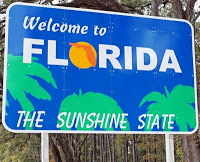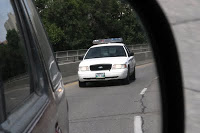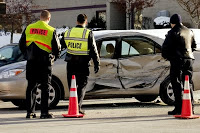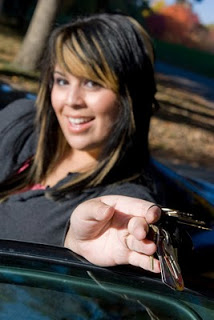Category Archive: Safe Driving

The Best And Worst Cities For Driving In Florida
September 13, 2011
Allstate Insurance Company released their annual report on the best and worst cities in which to drive. The study looked at Allstate collision claims and compared them to the national average and ranked the nation’s cities by population. To prevent any type of special event such as floods and hurricanes from skewing the results, the Allstate actuaries analyzed figures over a two year period to reach their results.
The list shows a driver’s likelihood to be involved in a collision and the average number of years a driver in that city can expect to go between collisions. Based on their results:
The top five safest cities in Florida for drivers, in terms of ranking, are:
1. Port Saint Lucie – A driver in Port Saint Lucie can expect to go 11.2 years between collisions and the chances for being involved in a collision are 10.4 percent less than the national average. Port Saint Lucie was ranked number 24 overall in the national list of safest cities in America.
2. Cape Coral – A driver in Cape Coral can expect to go 10.5 years between collisions and the chances for being involved in a collision are 4.8 percent less than the national average. Cape Coral was ranked number 42 overall in the national list of safest cities in America.
3. Tallahassee – A driver in Tallahassee can expect to go 9.8 years between collisions and the chances for being involved in a collision are 1.9 percent more than the national average. Tallahassee was ranked number 66 overall in the national list of safest cities in America.
4. Jacksonville – A driver in Jacksonville can expect to go 9.7 years between collisions and the chances for being involved in a collision are 3.1 percent more than the national average. Jacksonville was ranked number 73 overall in the national list of safest cities in America.
5. St. Petersburg – A driver in St. Petersburg can expect to go 9.7 years between collisions and the chances for being involved in a collision are 3.3 percent more than the national average. St. Petersburg was ranked number 74 overall in the national list of safest cities in America.
The top five most dangerous cities in Florida for drivers, in terms of ranking, are:
1. Hialeah – A driver in Hialeah can expect only 6.6 years between collisions and the chances for being involved in a collision are 52.5 percent more than the national average. Hialeah was ranked number 183 overall in the national list of safest cities in America.
2. Miami – A driver in Miami can expect only 7.0 years between collisions and the chances for being involved in a collision are 43.1 percent more than the national average. Miami was ranked number 178 overall in the national list of safest cities in America.
3. Tampa – A driver in Tampa can expect only 7.1 years between collisions and the chances for being involved in a collision are 41.7 percent more than the national average. Tampa was ranked number 176 overall in the national list of safest cities in America.
4. Hollywood – A driver in Hollywood can expect only 7.8 years between collisions and the chances for being involved in a collision are 28.2 percent more than the national average. Hollywood was ranked number 154 overall in the national list of safest cities in America.
5. Orlando – A driver in Orlando can expect only 8.0 years between collisions and the chances for being involved in a collision are 25.5 percent more than the national average. Orlando was ranked number 149 overall in the national list of safest cities in America.
The complete Allstate report can be seen at: http://allstatenewsroom.com/releases/00c90674-c797-4dd0-82c8-3813ccbe1e1e:en-US/download/e3fc06ab-a016-4248-89ef-72454729bd0a

How to Get a Florida License Reinstated on a Hardship License
August 8, 2011
Having your license revoked or suspended can cause different things to different people. Some people may end up losing their job if they are not able to get there. Some students may end up failing classes or even needed to drop out of school. Whatever it was that caused you to lose your driving privileges, there might be hope. Depending on the circumstance of the suspension, some drivers may be given the opportunity to pursue a hardship license.
A Florida hardship license is a special license that allows drivers to get to drive only to very specific places, while they work on getting their full license back. In short, it allows people to drive to and from work/home/school, while they work on their full license.
In some cases, it is mandatory (for Habitual Traffic Offenders) for a driver to take up advanced driver training BEFORE they are able to apply for a hardship license. This is the way to get a license reinstated.
These are the steps required in getting a Florida license reinstated:
Request for your driving record – In some instances, you may order this online, or you may get it from your local clerk of court.
Contact your local Administrative Reviews office – You have to submit your driving record and your course enrollment letter to your local Administrative Reviews office. They are the government agency that will grant you your hardship license if you are eligible.
Complete Advanced Driver Improvement Course – If you are eligible, you may be able to obtain your hardship license from the hearing officer. With this hardship license, you are now able to drive to your school or place of work. You have to complete advanced driver training to get your driver’s license reinstated. If you are classified as a Habitual Traffic Offender, you will be required to take the course before even applying for a hardship license.
Not being able to get anywhere can become the ultimate form of inconvenience our time and freedom. Do not waste it. Become a better driver, keep yourself and others safe when driving.

5 Things A Teen Driver Must Do To Handle A Crash
May 9, 2011
If you compare industrialized nations, some may say the US has a poor record of teaching young drivers how to drive. Instead of the requirement to be taught by professional driving instructors, American teens are taught to drive by their parents who, with few exceptions, are ill prepared to teach their teen how to drive. As a result, many teens are sent out on the road without the proper training or experience to handle a lot of the driving situations they will be faced with. Unfortunately, in the United States, that means that the chances of a teen becoming involved in a collision within the first year of driving are very high. Since the chances of a teen driver being involved in a motor vehicle collision are so high, teens should, at least, be prepared to deal with the aftermath of a crash.
Here’s a brief checklist of what a teen driver must know, when involved in a crash:
Don’t place blame, remain calm – This is much easier said than done given the emotions involved in a crash however, remaining calm can help defuse a potentially volatile situation. Tempers can flare after a crash and there is the potential for a “road rage” attack. Losing one’s calm can’t “un-crash” the vehicles so it is imperative that the teen remain as calm as possible. If the other driver becomes confrontational, stay in the car and wait for the police. There may be a temptation to run but the teen should be aware that he or she could be arrested for leaving the scene of a collision.
Check immediately for injuries to other drivers. Call Rescue, if necessary. – If anyone involved was hurt, the first priority is to call 911 for medical assistance. First aid should be applied to stop bleeding but, to prevent even greater injuries, an injured victim should never be moved unless there is a greater chance of further injury from fire or a secondary collision from oncoming traffic. Never give injured victims any water.
Emergency packs – Your car should be stocked with first-aid kits, emergency flares or reflectors, tools, and any other items that may help in case of a crash. Reflective triangles or flares placed at least 100 feet away from the crash will help to divert other traffic away from the crash site. If the collision occurred around a sharp curve or other obstruction, someone should be sent to wave down or otherwise warn oncoming traffic of the danger ahead.
If the vehicles can be moved, they should be moved off the roadway as quickly as possible. If the vehicles can’t be moved, all victims who are capable of walking should be moved well off the roadway to a safe location to avoid secondary collisions.
License, insurance, and registration – Your teen should always know where the vehicle’s registration and proof in insurance card are located. They should always be kept together in an envelope in the glove box. Most state laws require that drivers who are involved in a crash share their driver’s license number, vehicle registration, proof of insurance, and current address with law enforcement officers and other persons involved.
In most states, if a collision results in more than $500 in damages either to vehicles, or public or private property, the police must be called. If the police are not called, a formal report must be made to local law enforcement within 24 hours.
Documentation – Nowadays, with cell phones, a camera is never far away. Take pictures of the crash site and any damages that may have occurred. Note and take pictures of conditions, such as weather, roadway hazards, or whether or not the sun’s position may have blinded a driver, etc. Get the names and phone numbers of any witnesses. If the collision results in a court case, having as much documentation as possible will help.
A car crash is no time to panic or lose one’s cool. Handle it properly and there will be fewer hassles, in the long run, for the teen driver.

Five Tips After Teens Get Their Driver’s License
October 8, 2010
Once a teen gets their driver’s license, they will want to apply their new skill all the time. Some teens even volunteer to be the family driver and errand runner! (Depending on what age, and what kind of license they have.) But just because they have their license, the process of learning to drive isn’t over. Driver’s Education is continuing education, and there are still several things to tackle.
Here are a few tips for teens after they get their license:
- Encourage your parents to sign a parent-teen driving contract. If you don’t have one set up already, then show the initiative. Be the teen who demonstrates to their parents or guardian that they are willing to agree to some terms if they are going to help shoulder the responsibility of driving. It will save you both from any misunderstandings, over-reactions, and hard feelings, on the interpretations, expectations and consequences of your driving privilege.
- Practice, practice, practice. Though the teen may have his/her license, it’s easy for them and their parents to get complacent. While they may be skilled on how to drive, mastering and fine-tuning their skills only comes with experience. There’s still always much to master when it comes to driving, and asking a parent for help more not only increases that teen’s driving ability and safety, but also makes him/her bond closer with their parent. The evolution from learning to drive to becoming a safe and defensive driver is a long term progression. Parents need to stay engaged through out the process.
- Clear the dashboard. Like life, teens should remove unnecessary distractions when it comes to driving. Have disc-changers ready and music set before starting the vehicle. Keep cell phones in the glove compartment away from the driver’s reach. Also important, don’t be a chauffeur for friends. Having other teens in the car is a major form of distraction while driving, and research shows it increases the risk of a crash per passenger, exponentially.
- Clear your head someplace else. Driving isn’t a stress-reliever. When a teen has a problem, he/she shouldn’t use driving to clear his head. When a preoccupied mind does something that requires full attention, like driving, there is more likely to be mistakes. Having a talk with a friend, when you are not doing something else (like driving) is one of the best ways to cool one’s head. Driving when you are upset, angry or even extremely happy can be dangerous.
- Check the labels. Before taking any form of medication, even over-the-counter drugs, remember to check the labels. Some drugs have side-effects when taken, which may include dizziness or drowsiness. Either of which is never good for driving. Some medicines may give off false driving-under-the-influence signals. Make sure you are rested and in good health. Your physical health and well being can affect awareness, judgment and reaction time each important for safe driving.
Having your driver’s license does not mean you are good to go. In order to be a safe driver, there is still continuing education needed and defensive driving techniques to learn. Take advantage of this time to continue to be engaged in driver education as you gradually increase the opportunities and responsibilities driving brings.

Five Tips Before Teens Get Their Drivers License
October 6, 2010
A common rite of passage for teenagers is getting their driver’s license. Before teens get their license, they have to prepare themselves thoroughly. Here are a five tips for teens as they work towards their driver’s license:
1. Study the handbook. It’s surprising what kind of motivation teens have when it comes to studying for their driving test. The written part of the driving exam is pretty much like other tests for classes in school: you have to study to pass. You don’t study, you fail. You never know which part of the driving manual will appear in the exam, so it important to be well versed on the material to increase the chances of passing. If you decide you want to practice more, you can sign up for a drivers license practice test online course. You’ll get to see over 1,500 questions and answers similar to those found on the written driver’s test, along with detailed explanations.
2. Find out about the local GDL laws. Different states have different Graduated Drivers License (GDL) laws, and it’s worth noting that many states have varied age and time of day restrictions, passenger and mobile device limitations, and educational requirements before teens can get a full license. Also, the penalties and ordinances change depending on where you drive. Be familiar with the laws and ordinances for teen drivers for where you live and the places you plan to drive with your teen.
3. Make a covenant with parents. Straight talk and clear guidelines between teen drivers and their parents or guardians will assist teen driver safety. Setting boundaries that teens and parents can agree on will give teens an idea of the responsibility they will be undertaking. A Teen Driving Contract will help to guide and establish the expectations and consequences of driving privileges and behavior.
4. Practice makes perfect. A teen should always insist on getting more practice with their driving. On the other hand, parents and guardians over 21 years-old, should be more than willing to accompany them and teach them how to drive properly, especially in different types of weather and road conditions and environments, including nighttime, rain, and expressway driving. Several states require 50 hours of behind the wheel driving practice as a minimum, before full licensure. To help record this time, use a driving log. A printable version can be found at
5. No, focus makes perfect. Learning to maneuver the vehicle with ease and control is a milestone. But if a teen cannot stay focused, they are not ready to drive alone. This tip works in conjunction with the tips above. Giving each task the required amount of attention will make teen drivers reach their goal of becoming better drivers. Removing distractions to driving and keeping them focused on their interaction with the changing driving environment will not only make getting their license easier, it will help them be a safer driver.
Use these tips to help to set your teen up for success as they embark on preparing for their license. It is an exciting time of new endeavors and more independence. Have fun and be safe!
